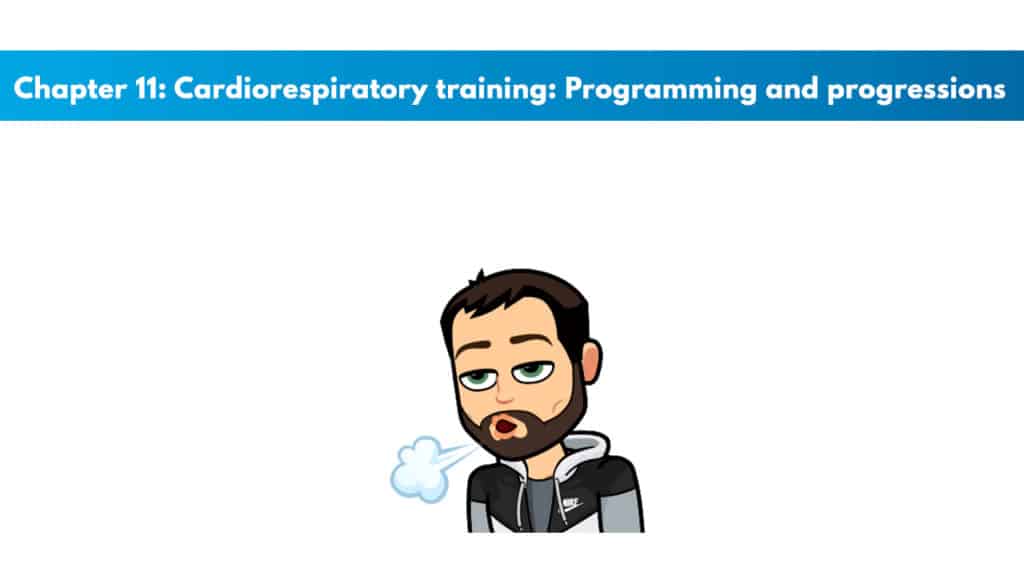
If you have not yet signed up for the ACE CPT certification, receive a big discount here.
Get your copy of the ACE CPT exam cheat sheet.
It helps immensely in your ability to study for the ACE test. This PDF printable one-page sheet gives you a breakdown of the skills and knowledge candidates need to pass the exam.
My PTP students report cutting their ACE study time and effort in half with Trainer Academy.
Benefit from the Exam Pass Guarantee and Retake Fee Guarantee. Plus, take advantage of my current discount code PTPJUNE for 35% off the MVP Program (Ends July 3rd, 2025).
Try it out for free here to see if it’s right for you, or read my detailed review for further insights.
Short and long-term cardiovascular exercise: Physiological adaptations
The muscular system
Increases in
The number and size of mitochondria
Capillaries that surround the muscles being recruited
- This enhances oxygenated blood delivery
Number of slow twitch muscle fibers for low-intensity cardio
Increases fast twitch muscle fibers for higher-intensity cardio
Changes to the cardiovascular system
Results in a higher cardiac output
Results in larger stroke volume
Hypertrophy of heart muscles
The respiratory system
Alveoli increase ventilation
Exclusive PTP CPT Offers |
||
|---|---|---|
Most Popular Cert | Best Online NCCA Cert | Best Study Materials |
Gold Standard Cert | A Good Option | Best CPT for you?  |
Increase in overall title volume
Inspiration
- Pulling the rib cage upward: surround this interior, scalene muscles, and sternocleidomastoid
Expiration
- Pulling the rib cage downwards: quadratus lumborum and rectus abdominis
How long does it take to increase aerobic capacity
Within six months, VO2 max plateaus
VT (ventilatory threshold) can continue growing for years
Physiological adaptations to interval-based and steady-state training
Steady-state takes about 3 to 4 minutes to reach
Heart rate, CO, O2 uptake rate (VO2), Blood lactate concentration, ventilation, and body temperature all get to stable elevated levels quickly after exercise
Interval training yields similar and sometimes greater results
- Interval training increases the tolerance for they lactate buildup threshold
Cardiorespiratory workout components
The warm-up
- 5 to 10 minutes
- Older clients need longer warm-ups as the conditioning phase is harder
Conditioning phase
- Cardiovascular drift – This is the gradual increase in one’s heart rate response from steady-state exercise
Cooldown
General guidelines for fitness, health, and weight loss
The frequency for healthy adults
Moderate intensity levels: five days per week
Vigorous intensity levels: Three days per week
A combination of moderate and vigorous intensities: 3 to 5 days per week
Intensity
Moderate intensity: 40% to 60% VO2R or HRR
Exclusive PTP CPT Offers |
||
|---|---|---|
Most Popular Cert | Best Online NCCA Cert | Best Study Materials |
Gold Standard Cert | A Good Option | Best CPT for you?  |
Vigorous intensity: at least 60% of VO2R or HRR
Duration
Zone number one: VT1
Zone number two: VT2
Zone number three: VT3
METS
Exercise progression
Fartlek training – This is a sequence of varying intensities that stresses both anaerobic as well as aerobic systems
Karvonen’s method for finding heart rate training percentage
Target heart rate (THR) = (HRR x % intensity) + RHR
HRR = MHR-RHR
Types/modes of cardiovascular exercise
Equipment based types
Cardiovascular exercise
Group exercise classes
Circuit training style
Exercising outdoors
Exercising in heat
- Heatstroke’s
- Heat exhaustion
- Peripheral vasodilation – This is where the blood comes to the surface of your skin to lower the internal heat load
Exercising in the cold
- Frostbite
- Hypothermia
Exercising in altitude
- Oxygen in the air is lowered due to the partial pressure
Seasonal exercising
Water-based exercising
Mind-body exercising
Lifestyle exercising
The ACE IFT cardiovascular training phases
Phase number one: Aerobic-based training
This helps create positive experiences
It focuses on steady-state cardio
Use the talk test to gauge
Progress clients after they can maintain 20 to 30 minutes of zone one (RPE 3-4_
Phase number two: Aerobic Efficiency training
Introduce intervals and increase the duration
Increase the client’s workload at VT1 and introduce lower-level VT2/RPE 5
Phase number three: Anaerobic Endurance training
This is for clients that have performance and endurance goals
Use the VT2 threshold test to determine heart rate at VT2
Increase focus
Phase number four: anaerobic power training
Increase client’s anaerobic power
Buffer significant accumulations of blood
Improve the Foss vision energy pathways
Most clients typically will not work in this phase
Special considerations
Older adults
Youth
If you want additional study materials, check out the team over at Trainer Academy. They have incredible study materials for ACE And I have a special limited-time discount for my readers. I also suggest you check out my review on Trainer Academy here.

 Have a question?
Have a question? 



Hey Tyler, where can I get the practice exam? Thank you.
Hello,
Currently, I am not selling additional study materials for the ACE personal training certification. On the homepage of the study guide and practice test that has 50 questions on it.
How much more in depth would you recommend studying beyond the study guide you provided here?
Hello,
I recommend at least skimming over the full textbook for ACE. This is a great starting point but I would definitely recommend checking out some practice tests to make sure you are fully ready before taking the exam.